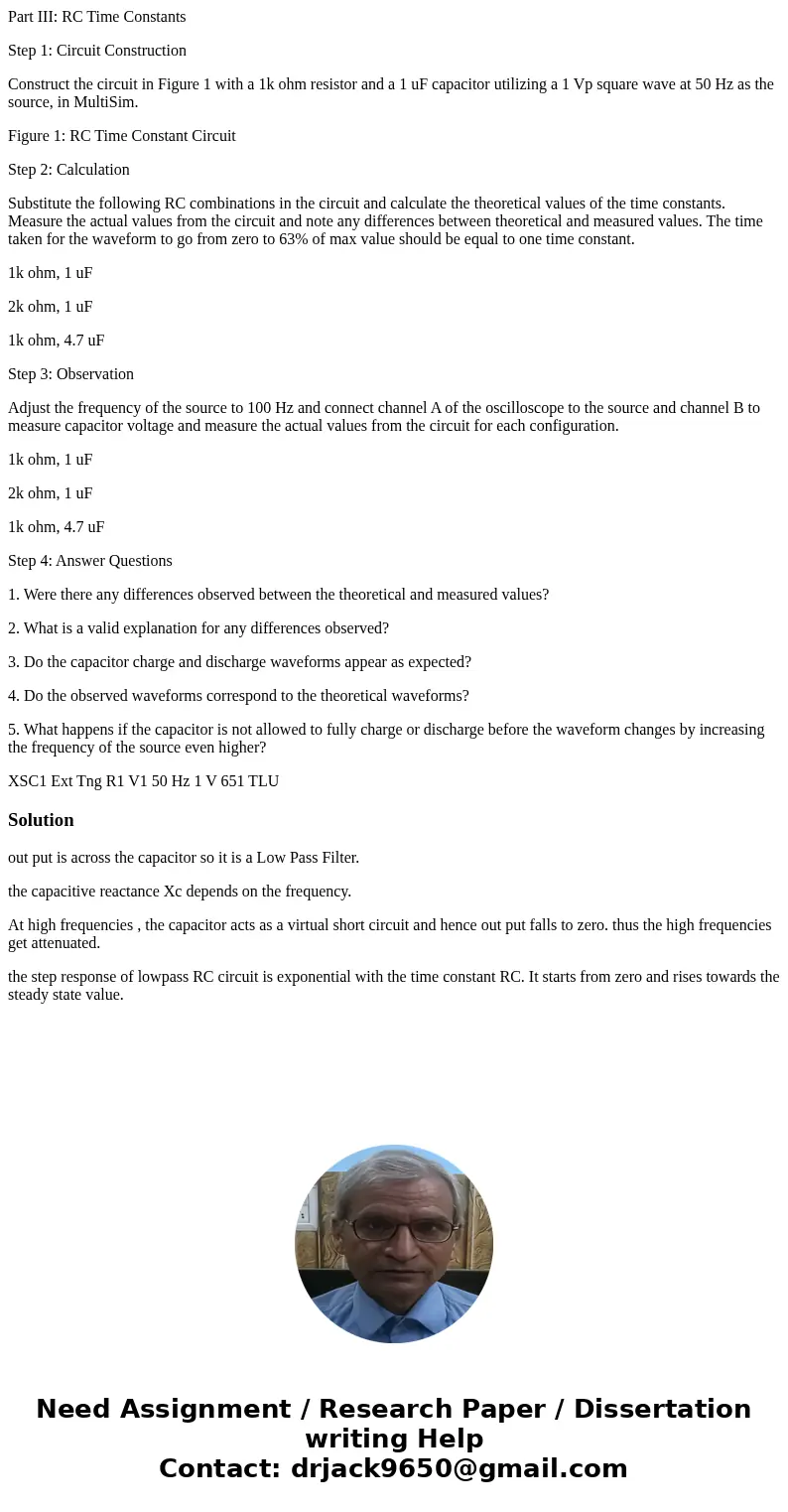Part III RC Time Constants Step 1 Circuit Construction Const
Part III: RC Time Constants
Step 1: Circuit Construction
Construct the circuit in Figure 1 with a 1k ohm resistor and a 1 uF capacitor utilizing a 1 Vp square wave at 50 Hz as the source, in MultiSim.
Figure 1: RC Time Constant Circuit
Step 2: Calculation
Substitute the following RC combinations in the circuit and calculate the theoretical values of the time constants. Measure the actual values from the circuit and note any differences between theoretical and measured values. The time taken for the waveform to go from zero to 63% of max value should be equal to one time constant.
1k ohm, 1 uF
2k ohm, 1 uF
1k ohm, 4.7 uF
Step 3: Observation
Adjust the frequency of the source to 100 Hz and connect channel A of the oscilloscope to the source and channel B to measure capacitor voltage and measure the actual values from the circuit for each configuration.
1k ohm, 1 uF
2k ohm, 1 uF
1k ohm, 4.7 uF
Step 4: Answer Questions
1. Were there any differences observed between the theoretical and measured values?
2. What is a valid explanation for any differences observed?
3. Do the capacitor charge and discharge waveforms appear as expected?
4. Do the observed waveforms correspond to the theoretical waveforms?
5. What happens if the capacitor is not allowed to fully charge or discharge before the waveform changes by increasing the frequency of the source even higher?
XSC1 Ext Tng R1 V1 50 Hz 1 V 651 TLUSolution
out put is across the capacitor so it is a Low Pass Filter.
the capacitive reactance Xc depends on the frequency.
At high frequencies , the capacitor acts as a virtual short circuit and hence out put falls to zero. thus the high frequencies get attenuated.
the step response of lowpass RC circuit is exponential with the time constant RC. It starts from zero and rises towards the steady state value.

 Homework Sourse
Homework Sourse